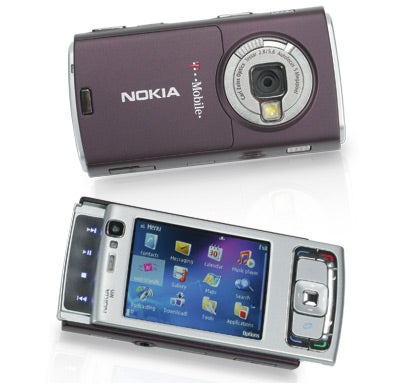Review of the Nokia N95 mobile phone
Manufacturer: Nokia
Model: N95
Price: £549
www.nokia.co.uk
It’s impossible to ignore mobile phone technology, especially when we’re hearing so often how mobile phones will replace digital compacts. So when T-Mobile contacted WDC to see if we’d be interested in trying out the latest ‘multimedia computer’ from Nokia – the N95 – I thought it was time to see whether a 5MP phone really can take on the compact camera market…
It goes without saying that you can make phone calls and send text messages with the N95, but this really is the tip of the Nokia iceberg. As with most mobiles, there’s the obligatory built-in camera (using a 5MP sensor and 5.6mm f/2.8 Carl Zeiss lens with digital zoom) which doubles as a VGA quality video camera capable of recording 30 frames per second until the internal memory or your microSD memory card is full.
You can also transfer music to the N95 and listen to it – or the radio – through headphones or the built-in speaker, or use the phone’s multimedia capabilities to play videos on the generous 2.6in LCD if you really can’t stand being separated from YouTube.
In addition, the new Nokia can be told to behave like a GPS unit, locating you in the world and providing access to maps like a hand-held satellite navigation system so you never get lost. If you do, then depending on the mobile network you’ve signed up to you can get full access to the internet with all its street maps and route-finders via a fast HSDPA connection.
With so much on offer, the design of the N95 is paramount if you’re going to navigate it with any success and there’s definitely a logic to Nokia’s design. When it’s closed there’s a single control cluster that will allow you to check text messages and change various menu settings, and the sliding design allows you to slide it in either direction to reveal either the numeric keypad or the ‘multimedia’ controls for music and video playback.
Unfortunately, the buttons on the main control cluster and the flush numeric keypad mean it’s all too easy to press multiple buttons or numbers simultaneously, leading to text messages getting sent before they’re complete and new options opening unexpectedly. I guess the designers didn’t account for inept phone users with large thumbs…
In its fourth orientation – ‘camera mode’ – the design improves considerably and it’s almost as if the N95 is a camera at heart with all the other paraphernalia bolted on. When you turn the phone horizontally and flip open the lens cover it’s immediately like a compact camera, with a shutter button and zoom control on the top and controls that behave like a typical four-way control pad. The camera functions are easily accessed and images are generally clear on the large 2.6 inch LCD.
The screen’s refresh rate is impressive too, with none of the ‘jerking’ effect that typifies a screen that’s lagging behind the movement. However, while it may look like a compact camera it doesn’t really perform like one – at least not a modern one. For a start, there’s a tendency for the screen to ‘white out’ under bright light (more so than most modern compacts) and the delay between pressing the shutter button and the phone taking a picture is longer than some self-timers. It’s so slow it really does feel like you could press the button and get into the shot before the picture’s taken.
Verdict:
The Nokia N95 is the technological equivalent of a multi-tool, combining many gadgets in a single package, but the ‘real deal’ will often do a better job.
As a camera, the awful shutter lag and poor images are comparable to digital compacts of five or so years ago, which might be OK for the odd snap, but if you want to take ‘proper’ pictures, buy a camera. It’s still that simple.
Pros:
It’s a phone as well as a camera
Cons:
Poor images and awful shutter lag
What Digital Camera Score: 82%





